I just came across that great video on YouTube. It’s demonstrating a tactical approach into Naval Air Landing Facility San Clemente. It’s fun to see how they use the thrust reversers in flight to massively reduce speed…
Category: Military
First USAF HC-130J Combat Rescue Tanker Rolls Out
Lockheed Martin rolled out the first of a new fleet of HC-130J combat rescue tankers for the U.S. Air Force’s Air Combat Command (ACC)
Lockheed Martin is contracted with the U.S. Air Force to build 21 C 130J Super Hercules to replace aging fleets of combat search and rescue HC-130s and special operations MC 130s. The U.S. Air Force is authorized to acquire up to 31 HC/MC 130Js (11 HCs and 20 MCs).

The new aircraft, which is based on a KC-130J tanker baseline, will have the Enhanced Service Life Wing, Enhanced Cargo Handling System, a Universal Aerial Refueling Receptacle Slipway Installation (boom refueling receptacle), an electro-optical/infrared sensor, a combat systems operator station on the flight deck, and provisions for the large aircraft infrared countermeasures system.
Photo & Source: Lockheed Martin
Video – F-35B STOVL Flight
Lockheed Martin released a video of the first Lockheed Martin F-35B Lightning II stealth fighter, passing overhead at 40 knots (46 mph) prior to a slow landing at Naval Air Station Patuxent River, Md. The flight was one of the last missions before the aircraft’s first vertical landing, and confirmed the jet’s power and controllability at very low speeds. The aircraft’s short takeoff/vertical landing (STOVL) propulsion system generates more than 41,000 pounds of vertical thrust, and enables airspeeds from zero to Mach 1.6. The F-35B will be flown by the United States Marine Corps, the United Kingdom’s Royal Air Force and Royal Navy, and the Italian Air Force and Navy. It will be capable of operating from small ships and austere bases near front-line combat zones.
Video
Photo
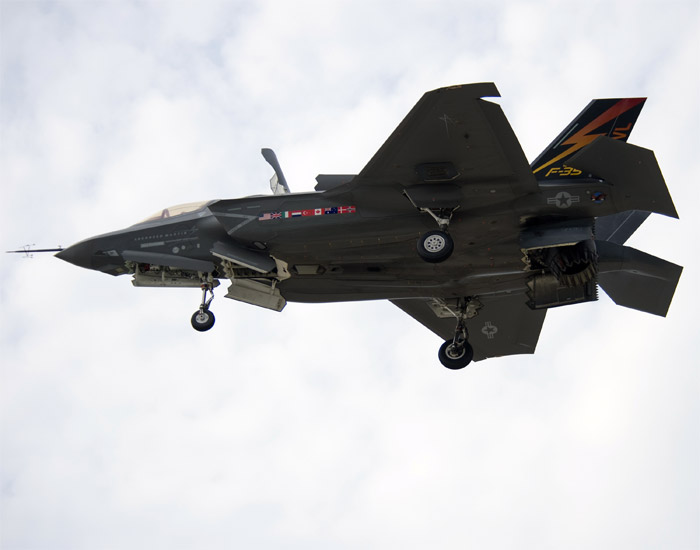
Northrop Grumman Drops Out of Air Force Tanker Competition
Unfortunately Northrop Grumman today announced that they decided to drop out of the U.S. Air Force tanker bid because of the clearly unfair nature of the competition.
The following statement was released by Northrop Grumman Corporation:
“After a comprehensive analysis of the final RFP, Northrop Grumman has determined that it will not submit a bid to the Department of Defense for the KC-X program. We reached this conclusion based on the structure of the source selection methodology defined in the RFP, which clearly favors Boeing’s smaller refueling tanker and does not provide adequate value recognition of the added capability of a larger tanker, precluding us from any competitive opportunity.
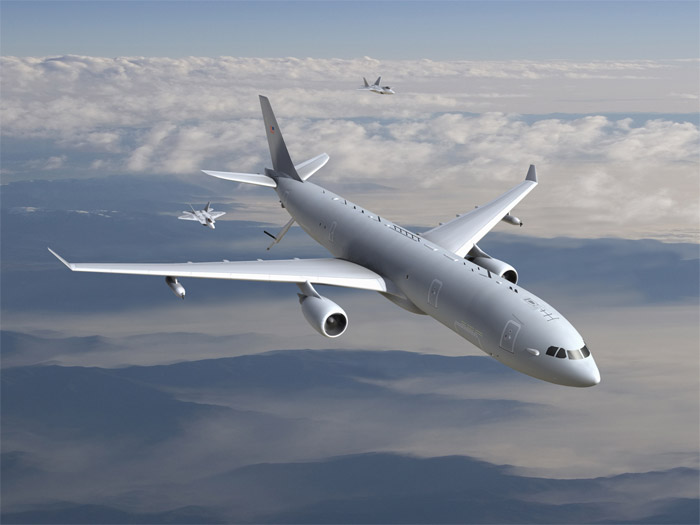
“Northrop Grumman fully respects the Department’s responsibility to determine the military requirements for the new tanker. In the previous competition, Northrop Grumman was selected by the Air Force as offering the most capable tanker for the warfighter at the best value for the taxpayer. However, the Northrop Grumman and EADS team is very disappointed that the revised source selection methodology now dramatically favors Boeing’s smaller refueling tanker. We agree that the fundamental military requirements for the new tanker have not changed since the last competition, but the Department’s new evaluation methodology now clearly favors the smaller tanker.
“We continue to believe that Northrop Grumman’s tanker represents the best value for the military and taxpayer – a belief supported by the selection of the A330 tanker design over the Boeing design in the last five consecutive tanker competitions around the globe. Regrettably, this means that the U.S. Air Force will be operating a less capable tanker than many of our Allies in this vital mission area.
“Our prior selection by the Air Force, our firm belief that we provide the best value offering, and the hard work and commitment of the many individuals and communities on our team over many years made this a difficult decision for our company. But we have a fiduciary responsibility to our shareholders to prudently invest our corporate resources, as do our more than 200 tanker team suppliers across the United States. Investing further resources to submit a bid would not be acting responsibly.
“We have decided that Northrop Grumman will not protest. While we feel we have substantial grounds to support a GAO or court ruling to overturn this revised source selection process, America’s service men and women have been forced to wait too long for new tankers. We feel a deep responsibility to their safety and to their ability to fulfill the missions our nation calls upon them to perform. Taking actions that would further delay the introduction of this urgent capability would also not be acting responsibly.
“We recognize that our decision likely creates a sole-source outcome for Boeing. We call on the Department to keep in mind the economic conclusions of the prior round of bidding as it takes actions to protect the taxpayer when defining the sole-source procurement contract. In the previous round, the Air Force, through a rigorous assessment of our proposal, determined that it would pay a unit flyaway cost of approximately $184 million per tanker for the first 68 tankers, including the non-recurring development costs. With the Department’s decision to procure a much smaller, less capable design, the taxpayer should certainly expect the bill to be much less.” (…)
It’s a shame that the lobbyists once again have been able to abuse their power.
Video+Photos – Sukhoi PAK-FA T-50 First Flight
Today the prototype of the first Russian fifth generation jet fighter, the Sukhoi PAK-FA T-50 successfully completed its first flight!
“In the course of the flight we’ve conducted initial evaluation of the aircraft controllability, engine performance and primary systems operation, the aircraft had retracted and extracted the landing gear. The aircraft performed excellently at all flight-test points scheduled for today. It is easy and comfortable to pilotâ€, – said the pilot Sergey Bogdan.
Video
Photos
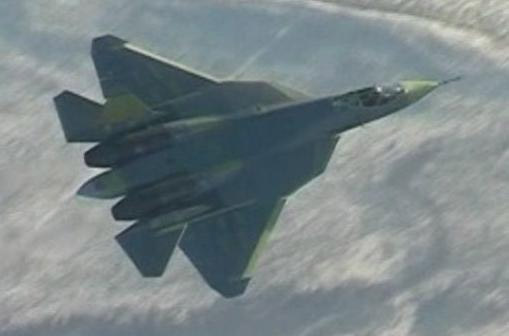
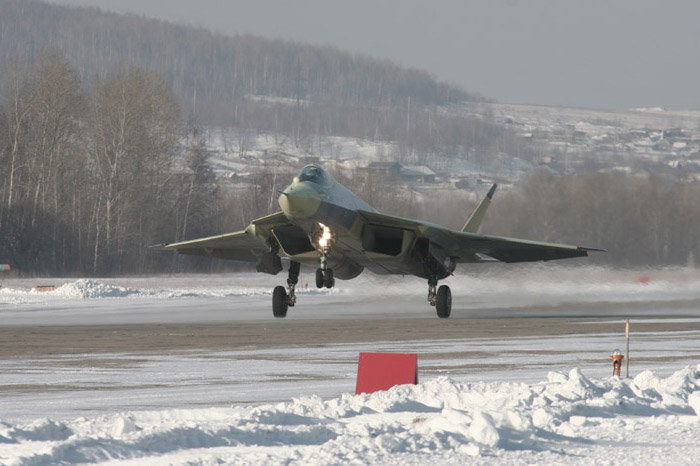
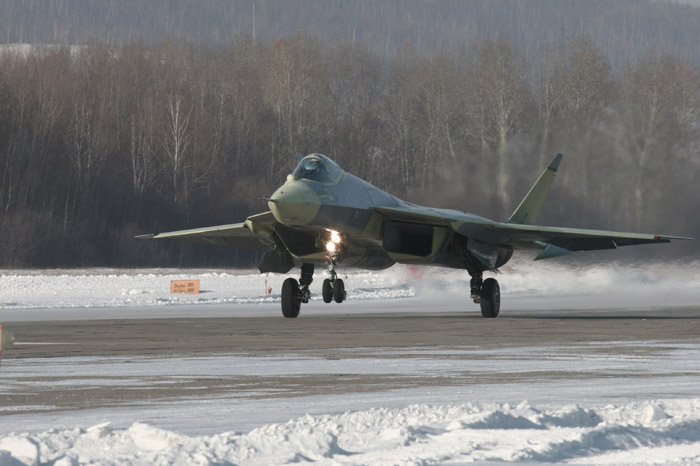
The current prototype is fully developed and intended to replace the MiG-29 Fulcrum and Su-27 Flanker in the Russian inventory and serve as the basis of the Sukhoi/HAL FGFA project being developed with India. As fifth generation jet fighter, it is designed to directly compete with the F-22 Raptor and F-35 Lightning II.
Photos: Sukhoi
Russia Tests 5th Generation Fighter
Russia has started tests of its fifth generation fighter – the Sukhoi T-50 PAK FA! The project in which India is also a partner, prepares to compete with the F-22 Raptor.
The first prototype of the aircraft rolled out on the runway of KNAAPO aircraft plant in Komsomolsk-on-Amur in the country’s far east. The test pilot switched on its engines and made two runs on the runway.
The Sukhoi T-50 PAK FA has a range of 5,500 km, and is scheduled to enter service with the Russian Air Force in 2015. Ahead of the maiden flight scheduled for this month, first runway tests of the fighter were held in December.
Although there is no reliable information about the PAK FA’s specifications yet, it is known from interviews with people in the Russian Air Force that it will be stealthy, have the ability to supercruise, be outfitted with the next generation of air-to-air, air-to-surface, and air-to-ship missiles, incorporate a fix-mounted AESA radar with a 1,500-element array and have an ‘artificial intellect’. The PAK FA will use on its first flights 2 Saturn 117S engines (about 14.5 ton thrust each). The 117S is an advanced version of the AL-31F, but built with the experience gained in the AL-41F program. The AL-41F powered the Mikoyan MFI fighter (Project/Article 1.44). Later versions of the PAK FA will use a completely new engine (17.5 ton thrust each), developed by NPO Saturn or FGUP MMPP Salyut.
Currently the only developed fifth generation jet fighters are the F-22 Raptor and the F-35 Lightning II.
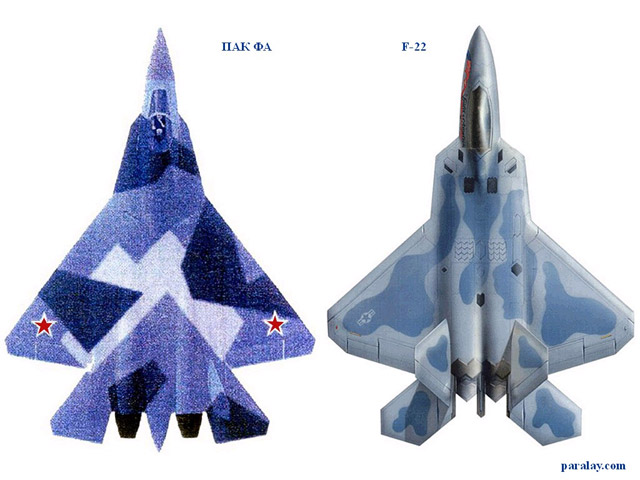
Under an agreement signed in October 2007, India has also joined Russia in the project based on Sukhoi’s PAK FA project, and the two nations are in negotiations to finalise the commercial contract for the deal.
At least three prototypes have been built by the KNAAPO aircraft plant.
Photo: paralay.com
Source: dnaindia.com
Video – Airbus A400M First Flight
Today Airbus Military’s all-new A400M took off for its maiden flight from Seville Airport in Spain. The first entirely new airlifter of the 21st Century took to the air from runway 09 at 10:15 local time (09:15 UTC).
The aircraft, with a take-off weight of 127 tonnes, was equipped with 15 tonnes of flight-test equipment including two tonnes of water ballast and its performance was being monitored in realtime by teams of engineers in Seville and Toulouse using state-of-the-art air-ground telemetry. The crew explored the aircraft’s handling characteristics in the various flap configurations, checked the powerplant operation and made initial evaluations of the aircraft’s systems.
Its four all-new Europrop International (EPI) TP400D turboprop powerplants producing 11,000shp (8,200kW) each are the most powerful propeller engines ever fitted to a Western aircraft.
The duration of the flight was 3h 47min and ended with a landing back at Seville in front of more than 2,000 media, VIPs and Airbus Military staff.
Video of the A400M first flight:
Over the last four weeks the aircraft has been extensively tested on the ground in an increasingly challenging programme leading up to the first flight.
The engines have been run at full power, the electrical systems and on-board data network exhaustively tested, and numerous taxying runs at progressively higher speeds have been performed culminating in a rejected take-off test at a speed of 123kt (227km/hr) on 8th December.
Today’s first flight marked the beginning of a test campaign that will see some 3,700 hours of flying by an eventual five aircraft conducted between now and entry-into-service at the end of 2012. The A400M will receive both civil certification by the European Aviation Safety Agency (EASA) and military certification and qualification.
The A400M was designed from the outset as an aerial refueller and can offload fuel to both fighters and helicopters at their preferred speeds and heights.
The A400M features the same proven fly-by-wire controls technology as Airbus’ highly successful airliner family and an advanced cockpit that has evolved from that of the A380. Carbon-fibre reinforced plastic (CFRP) wings and other large structures bring weight and strength advantages and cut the risk of corrosion.
Photo of the A400M cockpit:
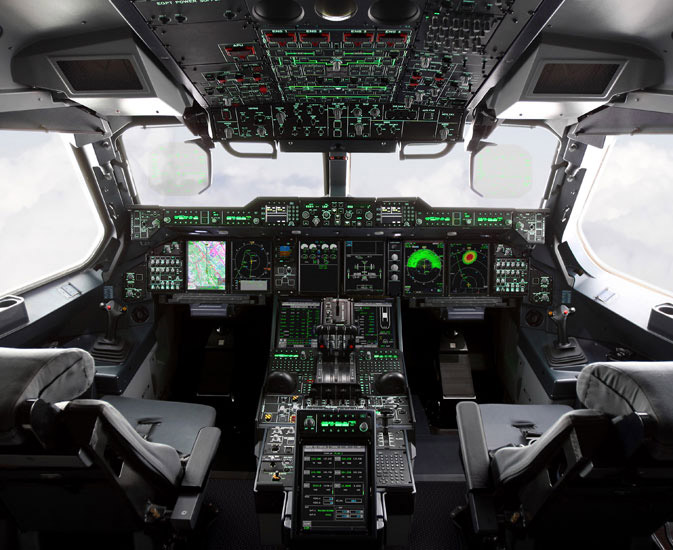
A total of 184 aircraft have so far been ordered by Belgium, France, Germany, Luxembourg, Malaysia, Spain, Turkey and the United Kingdom,
Source, Photo & Video: Airbus
Watch A400M First Flight
The first flight of the Airbus A400M is finally scheduled for tomorrow, Friday December 11, 9:00 AM GMT+1!
You can watch the maiden flight that will take place in Seville (Spain) – LIVE via webcast at http://www.a400m.com
The A400M is the new European military airlifter that will replace the aging C-130 Hercules and C-160 Transall. The turboprop Airbus A400M features a fly-by-wire Flight Control System with sidestick controllers.
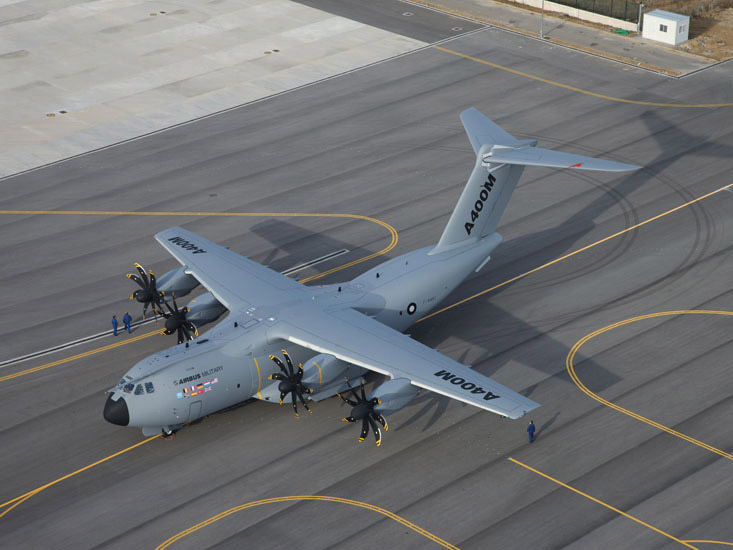
Photo: Airbus
Airbus A400M First Flight Early December
This week Airbus announced that the first flight of the Airbus A400M has been scheduled to the week December 7 – 13, if weather permits.
The A400M is the new European airlifter of the 21st century. It has more than twice the payload and volume of the C-130 Hercules and C-160 Transall, that it will replace. It will play an essential role in enhancing Europe’s airlift capabilities, whilst enabling the establishment of common support, training and operational procedures and greater interoperability in multi-national humanitarian and peace-keeping missions.
The Airbus A400M features a fly-by-wire Flight Control System with sidestick controllers, a flight envelope protection system that was already proven in Airbus commercial aircraft, an advanced structural design incorporating extensive use of composite material and high performance turboprop engines. Its Europrop International TP400-D6 enginge is the second most powerful turboprop engines after the Kuznetsov NK-12!

Photo: EADS
Seven European countries – Belgium, Britain, France, Germany, Luxembourg, Spain and Turkey – have ordered 180 planes, in most cases to replace an ageing Transall and C130 Hercules fleet. A South African order of 8 aircraft was just cancelled on November 5.
Video – Airbus A400M Engine Start
Airbus recently published the following video showing APU and engine start-up of the first Airbus A400M. The Airbus A400M is a European four-engine turboprop military transport aircraft that can be configured for aerial refueling. It has been designed by Airbus Military corporation to replace a variety of aircraft, including the Lockheed Martin C-130 Hercules and the Transall C-160.
